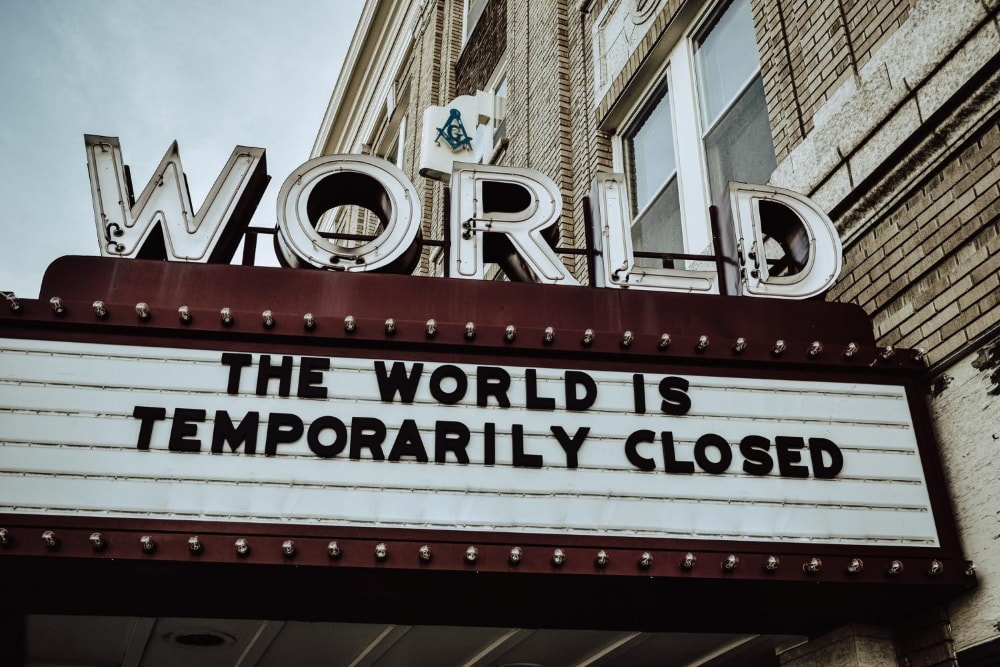Author: Renjini Rajagopalan
Published: April 25, 2020

Most countries impacted by the COVID crisis have put in place containment measures of one kind or the other. These range from sealing state and national borders, to imposing curfews and lockdowns in varying degrees. However, given the unsustainability of lockdowns which impose large economic costs, countries have been exploring strategies by which they can slowly revive economic activity, but without compromising on public health measures to contain the COVID infection.
Many countries are still struggling with the first wave of virus infections and therefore seem far away from implementing an exit strategy. Major European countries like Spain, Italy and Netherlands – despite their public spending in healthcare – haven’t done well either. Germany, however, seems to be an exception to this rule. Germany has over 1,53,000+ cases, of which only a third are currently active.[1] The country has cured and discharged over 106,800+ people successfully, and has death rates that are a fifth of what Spain and Italy are going through, and nine times lesser than the US.[2] Germany’s lockdown exit strategy involves allowing hairdressers, shops of 800 sq. meters as well as bookshops, bike stores and car dealerships to function.[3] By focusing on smaller establishments, and the auto industry in Germany which employs many people, the government is trying to elevate hardships for those employed in these sectors. Germany has also planned to open its educational institutions to relieve the burden of home-schooling, and to prevent an escalation of social and gender inequality in the next generation.[4] However, kindergarten classrooms will not function because younger kids usually find it difficult to socially distance or wear masks properly.[5] Large cultural events, such as concerts and beer festivals, will continue to remain banned until the end of August.
A major benefit that Germany seems to have had is its successful healthcare system which makes the country reasonably certain that if social distancing and adequate caution is maintained, then a second wave of COVID cases can be stymied. Extensive contact tracing has also been implemented by public health offices, and the state has leveraged even students (who are trained for contact tracing), to help beef up state capacity.[6] In the testing arena, the government has a wealth of private laboratories that have been leveraged to improve testing capacity.[7] Health insurance covers testing, and the state has also passed the COVID-19 Hospital Relief Act which guarantees funding of hospitals to ensure their liquidity, and to ensure compensation and rehabilitation of those in the medical profession.[8]
Yet another example of a country that seems to be doing relatively well is South Korea. Though the country only had a tenth of the cases that Germany did (10,708),[9] it has managed to successfully curb the spread of the virus without enforcing a full lockdown.[10] South Korea has allowed the functioning of a number of economic activities, including the running of its transport systems and many commercial establishments, so long as social distancing measures are maintained. While the pandemic was underway, factories were permitted to function at some level,[11] and once numbers came down, national elections were held too.[12] Currently, it is also understood to be considering requests to allow potential travel exemptions for businesspeople given how the country is one of the largest exporters and investors in the world.[13] That being said, schools remain closed for the time being, as do religious places.[14]
Some things that have worked well for South Korea have been its contact tracing measures, wherein information of confirmed patients is published on each local governments’ official website, and citizens also get regular alerts via the government’s Corona 100m app if they are in the vicinity of a COVID patient.[15] The government has also been making heavy use of surveillance technology, notably CCTV and the tracking of bank cards and mobile phone usage data, to identify who to test in the first place.[16] The state has been relatively transparent about the collection of information and is said to be anonymizing it. Interviews with citizens reveal that while some privacy concerns exist about contact tracing, most people are willing to surrender some freedoms in return for public health and safety.[17]
Perhaps most important has been South Korea’s experience battling SARS in the past[18]. The state proactively directed its biotech businesses to create COVID rapid test kits, as early as January 2020[19] which helped with its own testing, and now even other countries through exports. The country’s cultural comfort with social distancing norms – with South Koreans generally wearing face masks when unwell or while traveling to prevent contamination by germs, and bowing to greet each other as opposed to more intimate expressions of affection like hugs or handshakes, have also helped enforcement of health protocols. The country has also announced that all medical costs associated with COVID-19 would be met by the government regardless of whether it is a citizen or a foreigner resident in South Korea.[20]
While India is not in the same league as Germany or South Korea when it comes to public health infrastructure, two key lessons still stand out – (i) the need to leverage the private sector and cover costs of testing and treatment, and (2) to utilize technology in contact tracking, but responsibly. As India, relaxes the lockdown, infections are likely to increase again. Unless the government’s capacity is buffeted through the use of resources in the private sector, the effort to control COVID is unlikely to pay off. While there has been some movement on this front, the collaboration between the private sector and the government is yet to properly take off. Secondly, the adoption of technology in contact tracing, while deployed through the use of the Arogya Setu app, and through drones as well as CCTVs in states like Maharashtra[21] and Kerala[22], has not been very transparent. There is fear that the data collected through these means could be repurposed to tighten the government surveillance net, particularly in the absence of a national privacy legislation.[23],[24] What is urgently needed, therefore, is for the government to be transparent about the architecture of the tech apps being deployed and institute strict frameworks, and check and balance mechanisms, to regulate the usage of the data being generated from these interventions.
Sources:
[1] https://coronavirus.jhu.edu/map.html;
[2] https://coronavirus.jhu.edu/map.html;
[3] https://www.euronews.com/2020/04/06/analysis-what-is-europe-s-coronavirus-exit-strategy
[4] https://innovationorigins.com/initial-outline-of-the-german-exit-strategy-face-masks-and-then-back-to-school/
[5] https://innovationorigins.com/initial-outline-of-the-german-exit-strategy-face-masks-and-then-back-to-school/
[6] https://www.covid19healthsystem.org/countries/germany/countrypage.aspx;
[7] https://www.bloomberg.com/news/articles/2020-04-02/private-labs-helped-germany-test-1-million-for-covid-19-virus;
[8] https://www.covid19healthsystem.org/searchandcompare.aspx
[9] https://coronavirus.jhu.edu/map.html;
[10] https://www.npr.org/sections/goatsandsoda/2020/03/26/821688981/how-south-korea-reigned-in-the-outbreak-without-shutting-everything-down;
[11] https://www.ft.com/content/04e9c5fe-52b1-4eb8-bf9c-793d71a0524d
[12] https://asia.nikkei.com/Spotlight/South-Korea-election/South-Korea-s-COVID-19-response-masks-economic-woes-at-election
[13] https://www.ft.com/content/04e9c5fe-52b1-4eb8-bf9c-793d71a0524d;
[14] https://www.aljazeera.com/programmes/upfront/2020/03/testing-times-south-korea-covid-19-strategy-working-200320051718670.html
[15] http://ncov.mohw.go.kr/en/faqBoardList.do?brdId=13&brdGubun=131&dataGubun=&ncvContSeq=&contSeq=&board_id=&gubun=;
[16] https://www.nature.com/articles/d41586-020-00740-y;
[17] https://www.nature.com/articles/d41586-020-00740-y;
[18] https://www.ft.com/content/e015e096-6532-11ea-a6cd-df28cc3c6a68
[19] https://www.theguardian.com/commentisfree/2020/mar/20/south-korea-rapid-intrusive-measures-covid-19
[20] https://www.brookings.edu/blog/techtank/2020/04/13/combating-covid-19-lessons-from-south-korea/
[21] https://indianexpress.com/article/cities/mumbai/india-lockdown-drones-5000-cctv-cameras-keep-eye-on-crowd-in-mumbai-6342941/
[22] https://economictimes.indiatimes.com/news/politics-and-nation/kerala-police-drone-video-shows-lockdown-flouters-running-away-like-tracer-bullets/articleshow/75046046.cms?from=mdr
[23] http://www.rfi.fr/en/international/20200421-india-surveillance-apps-during-covid-19-%E2%80%93-boon-or-bane
[24] https://economictimes.indiatimes.com/tech/software/aarogya-setus-not-all-that-healthy-for-a-persons-privacy/articleshow/75112687.cms
